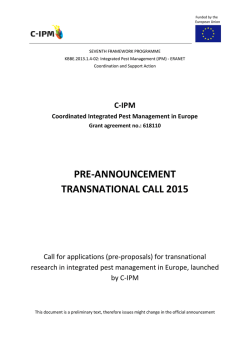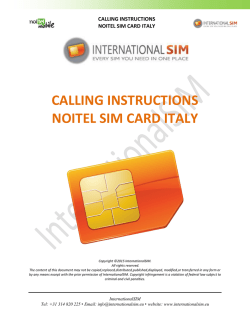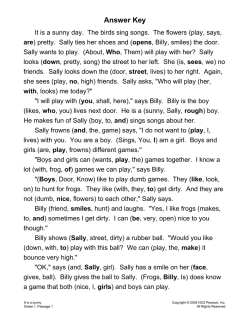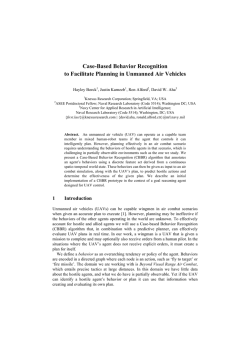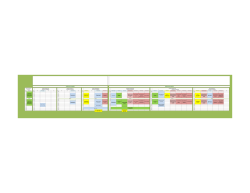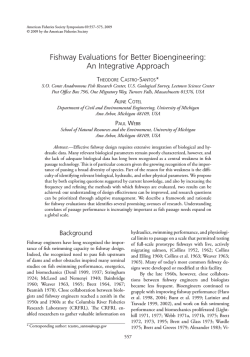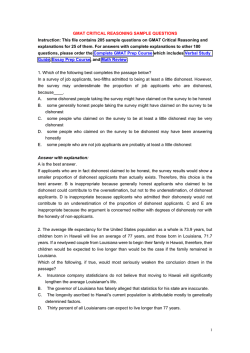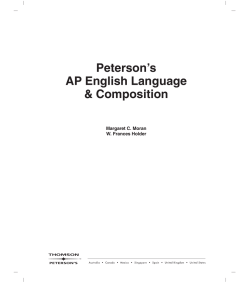
SIMCET 4 –EXPERTS TA
SIMCET 4 –EXPERTS TAKE The following analysis gives an area‐wise break up of easy, medium and difficult questions, which will help you benchmark your performance. Overall, SimCET‐4 was more challenging than all the previous SimCETs. Though we could say that the overall level of difficulty for this SIM was higher than the CET in the last couple of years(2012&2014) ,please do not get surprised if you get an exam of this level of difficulty.Just to remind you that the CET was a lot of tougher in 2011, if we compare CET’s of the last 6‐7 years. Only students who have been practicing regularly and have sound concepts would be able to achieve a score of around 120 (for an exam at this level of difficulty) ,which should be your target score for the top 10‐15 MBA colleges in Maharashtra. With just about 6‐7 weeks left for the actual CET ,you must evolve a definite strategy and study plan In the next few days. You must spend time with your IMS mentors to work out the kinks in your performance. If you consolidate your knowledge in each area as we have suggested below, you will be able to improve your score substantially. As the time available per question in the CET is very less, and as all questions carry the same marks, you need to strictly adhere to the time lines you set for yourself. Reiterating, please mark answers to all the 200 Questions. As a strategy, decide to mark all questions you don’t know or are unable to solve due to shortage of time as option A or B or C or D or E throughout .Even in this SIM we observed that 30‐35% of the test takers have left questions beyond Q 150 unmarked. Given below is an area wise analysis Verbal Ability There were 32 Verbal Ability questions in this test. They were a little on the tougher side than normal: only 9 were easy, 13 were of medium difficulty, and 10 were tough. The emphasis in the Verbal Ability area of this SimCET was on word‐based questions. There were 7 questions on Synonyms, Antonyms and Odd Man Out, and as the table below shows, nearly all of these were difficult. There were some tough words in the Cloze questions as well. Word‐based questions can be a mixed blessing in the CET. Question types such as Odd Man Out take very little time to solve – probably not more than a few seconds per question – which makes them ideal for a test where speed is essential. But the words themselves can sometimes be difficult, and even requite a certain amount of general knowledge to solve. For example, even if you knew the meanings of words like ‘apéritif’ and ‘digestif’ (two very obscure words) in Q. 123, you would need to know that though they are both kinds of drinks, the former is used as an appetizer, while the latter is drunk after a meal. So they are not synonyms. Similarly, ‘apéritif’ and ‘hors d’oeuvre’ serve the same function (as an appetizer), but one is a drink and the other food, so they are not synonyms either. The overall break‐up of the questions was as follows: Area Easy Medium Difficult Total Grammar – Highlighted Phrases 2 2 1 5 Grammar – Sentence Combination 2 2 1 5 Cloze (2 passages, 5 blanks each) 2 5 3 10 Odd One Out 2 2 Incorrect Words 2 3 5 Synonyms & Antonyms 1 1 3 5 Total 9 13 10 32 Verbal Reasoning There were 23 VR questions in this test: 8 easy ones, 11 medium ones and 4 difficult ones. Once again, students are not attempting a significant number of the questions. For example, 40% of all test‐takers did not attempt the last Critical Reasoning set – it’s outrageous! It feels like we are saying the same thing over and over again, but we have to do so, since the problem seems to be getting worse instead of improving. We understand that Critical Reasoning type questions are not exactly must‐solve questions (since they require quite a bit of reading and thought to solve correctly), but it’s possible that students are unnecessarily intimidated by them. The ones like Qs. 199‐200, which have a paragraph and six statements, are relatively easier than the ones like Qs. 39‐40 and Qs. 54‐55 (which have questions with separate options), as you need to read only one set of options for two questions, and solving one often gives you a clue for the other question. In case of Qs. 199‐200, for instance, it is clear that statement A is supported by the passage, as it is simply a paraphrase of the main point of the passage. So the answer to Q. 200 is A; therefore, Q. 199 cannot have the same answer, so the option with A in it is eliminated (option [1]), leaving you with one less option to contend with. A set like Qs. 54‐55 should be particularly easy, as it is about a topic that you yourself may have debated with your friends – the usefulness of tablets. Rather than seeing a question like Q. 55 as being on an abstract issue, think of the options as something you would say to a friend who was contemplating buying a tablet. Which option do you think would most likely dissuade him from buying one? Once you start thinking of CR questions in such real‐life terms, you’ll see that they are nothing to be afraid of. The overall break‐up of the questions was as follows: Area Easy Medium Difficult Total Course of Action 1 1 Critical Reasoning (3 sets, of 2 questions each) 3 3 6 Syllogisms 2 4 6 Jumbled Paragraph 1 3 1 5 Paragraph Completion (double blanks) 2 3 5 Total 8 11 4 23 Reading Comprehension There were two RC passages in this SIMCET, with 5 questions each. Most of the questions were of low‐ medium level of difficulty, with only one difficult question. Considering the time constraints of the CET, it is not advisable to spend too much time reading RC passages, especially the particularly long ones. But skimming the passages or scanning them for relevant information would help you solve a number of the questions. The first passage (the one on the building of a dam in Cambodia) was very easy, with either direct questions or word‐based questions. The passage itself was a long one, but it was not necessary to read it fully – simply scanning the passage for information relevant to the questions would have helped you solve most of the questions. The word‐based questions could be solved without even looking at the passage. The second passage (the one on the Planning Commission) was a little more challenging, but not particularly tough either. Three of the questions asked the meaning of words or phrases used in the passage, so these could be solved by scanning the passage for the relevant word/phrase, rather than reading the passage fully. The overall break‐up of the questions was as follows: Area Easy Medium Difficult Total Passage – Cambodian dam 4 1 5 Passage – Planning Commission 1 4 5 Total 5 4 1 10 Logical Reasoning This was one of the the areas which actually brought down the scores of a lot of the test takers.In one of the earlier SIMs we had suggested solving sets based on Arrangements(Circular & Matrix Arrangements in particular) towards the end especially if there are multiple variables or the data of the question is slightly bulky .This strategy would have worked for well here.In general, one should try to solve the questions based on areas like Selection Criteria,Symbol based Logic,Alphanumeric Series, Series Completion & Coding before attempting questions on Arrangements if not comfortable reading and analyzing a lot of data.In this test , a lot of students (close to 30%) left out the set on Alphanumeric Series (Q182‐186) ,which was a sitter .Losing 5 marks can make a big difference in realizing your dream of getting into a top college The overall break up of questions in Logical Reasoning was as follows Area Easy Matrix Arrangements Linear Arrangements 9 Circular Arrangements Alphanumeric Series 5 Sequential Output Coding Directions Symbol based Logic 6 Series Completion 2 Selection Criteria 5 Medium Difficult 7 7 5 7 1 1 1 1 2 1 Quantitative Aptitude Questions on Quantitative Aptitude in SimCET‐4 were marked by mostly easy‐moderate questions that could have been solved in about a minute. Arithmetic, Modern Math and Quantitative Comparison dominated this area.An observation in this SIMCET was that a lot of you still need to learn & revise the basic mathematical formulae in Geometry and Algebra.Questions 65 & 93 (based on Quadratic Equations) and Questions 66 (based on sphere and cone)and 114(on coordinate geometry), were all formula based questions.These were attempted correctly by less than 20% of the test takers.If you are amongst those who have got these questions wrong you need to brush up on your basics very quickly.One can’t expect questions easier and more direct than this in the actual CET. An area‐wise analysis is given below. Area Geometry (3‐D objects,Co‐ordinate Geometry) Arithmetic (SI/CI,TSD,Ratios,Work) Numbers ‐ (HCF&LCM,Squares) Modern Math (Probability,P&C) Algebra (Quadratic Equations ) Quantitative Comparison Easy Medium 2 2 2 2 3 4 1 3 2 Difficult Visual Reasoning As compared to SIMCET 3 ,the Visual Reasoning in this SIM was marginally easier.One mistake, a lot of you have made is missing out on 4 easy Visual Reasoning questions( from Q 159‐164) that are somewhere close to the end of the SIM.Please do not leave out sitters like these .Instead of solving the tougher questions like the ones based on arrangement ,you could have used your time solving the easier Visual Reasoning questions and improvised on your scores. The overall break‐up of the questions is given below: Area Easy Medium Difficult Vis R ‐ Dissimilar pair amongst 5 pairs 4 1 Vis R ‐ Odd Man Out ‐7 figure series 4 4 Vis R ‐Series –(Missing & Completion) 6 6 1 Data Interpretation & Data Sufficiency We have always believed that DI questions are more or less freebies. At their toughest, they involve interpreting the meaning of the data given. But even then they offer a good value for time spent, since there is a very high chance of getting them correct. The key to becoming better at solving such DI sets is to understand that DI does not mean just painful number crunching; that would mean going at the problem with a hammer. You need to develop the ability to to do smart calculations rather than lengthy and tedious ones.Take the example of the question of the 2 pie charts(q115‐119).Instead of calculation value wise, the first pie chart could have been broken as follows Train 20.00% Bus 30.00% Auto 15.00% Taxi 20.00% Car 2.40% Walk 4.20% Cycle 2.10% Motorcycle 6.30% Now questions 116,117 & 119 could be solved by just using these percentages instead of actual values.Also for Q115 & Q118,one could have taken the sum/difference of the percentages and multiplied this by the total people using transport (i.e 32000) ,which is given. The break‐up of DI sets was as follows Area Easy Medium Difficult Pie Charts 5 Line Graphs 2 3 Tables 5 Bar graph 5 There were 8 questions on Data Sufficiency (4 in Quantitative Aptitude and 4 in Logical Reasoning).Almost all of these were on the easier side except Q 24 ,the one on Circular arrangements Epilogue These are the last 6‐7 weeks. There is very less time left for you to work towards giving yourself a good chance of cracking the CET. If you are not seeing a jump in your scores ,you need to ensure that you have thoroughly learnt all concepts. Ensure that you know how to timely solve each and every question in the CET Intensive Workshops, which are being conducted at your center. There are no concepts outside of the workshops that you need to learn to crack the CET.If your scores are not consistent, you really need to look at the specific areas in the SimCETs you are finding problematic. Try to locate a pattern. For example are you having a difficulty in Verbal Ability ? You need to first identify and then work on those specific areas. Some of you may have thoroughly learnt all concepts and may be doing everything right, except that you may be doing it too slowly. You may have a decent accuracy, but your speed may be slow, which means that you would be attempting less questions. Speed will come only with practice With just four more SimCETs to go, we hope that all of you are preparing seriously and working on your respective Achilles’ heels. ALL THE BEST FOR SIMCET 5 !
© Copyright 2025


